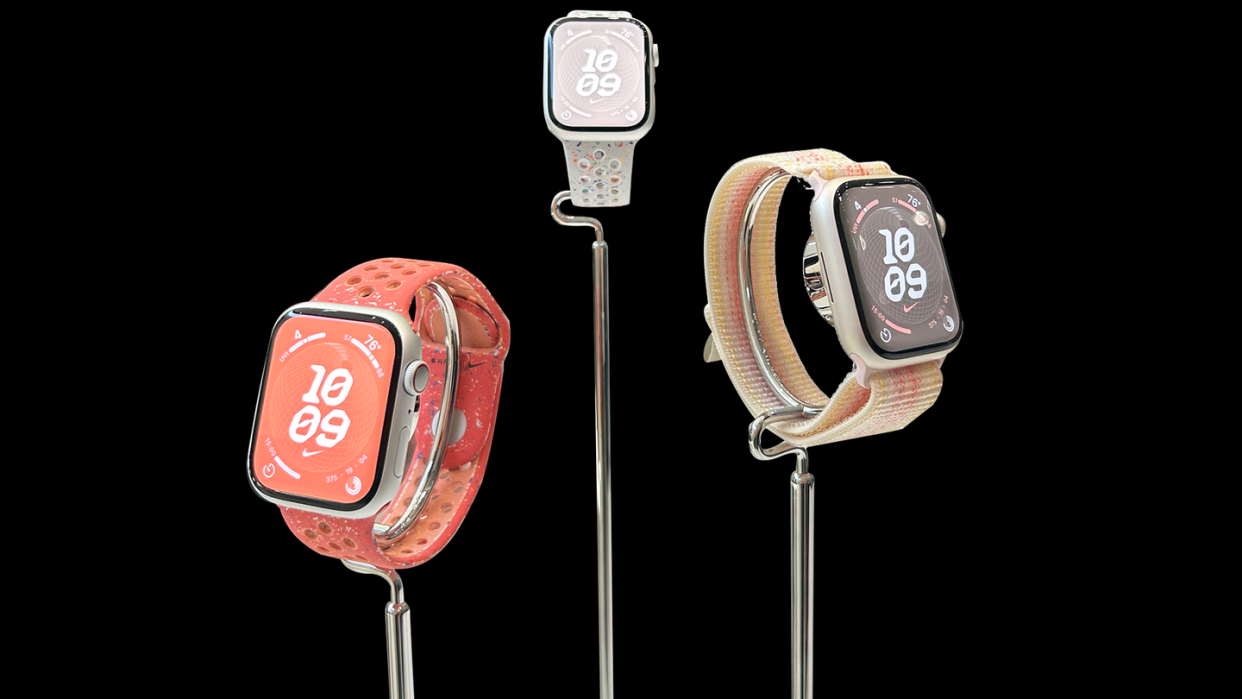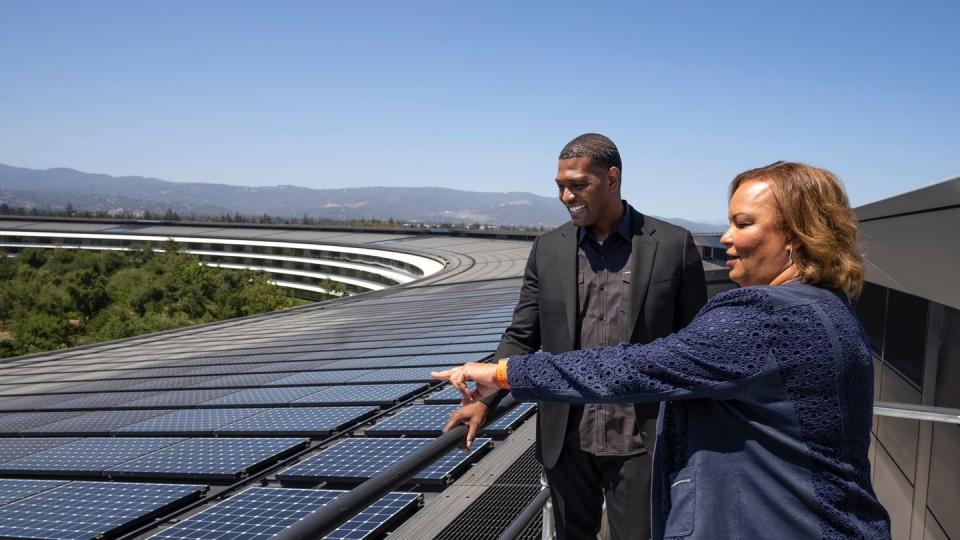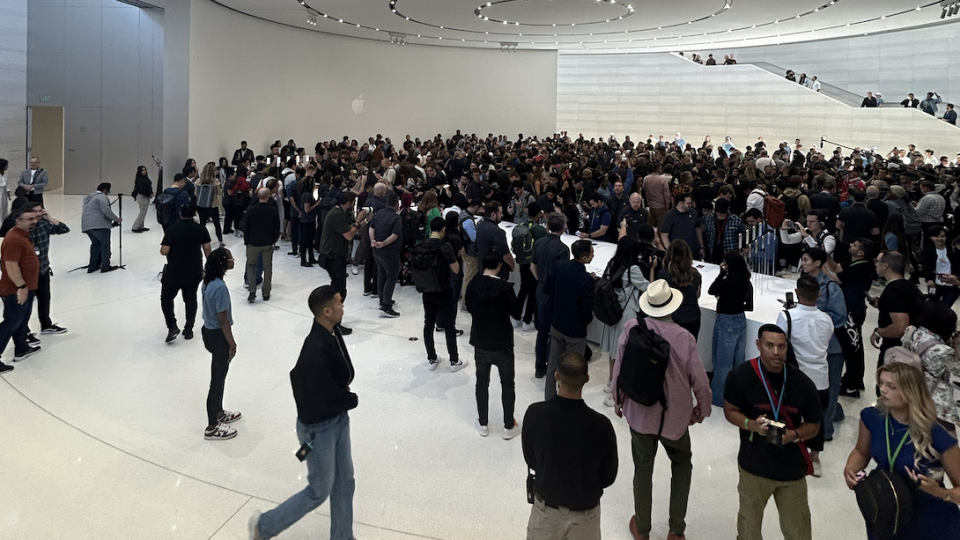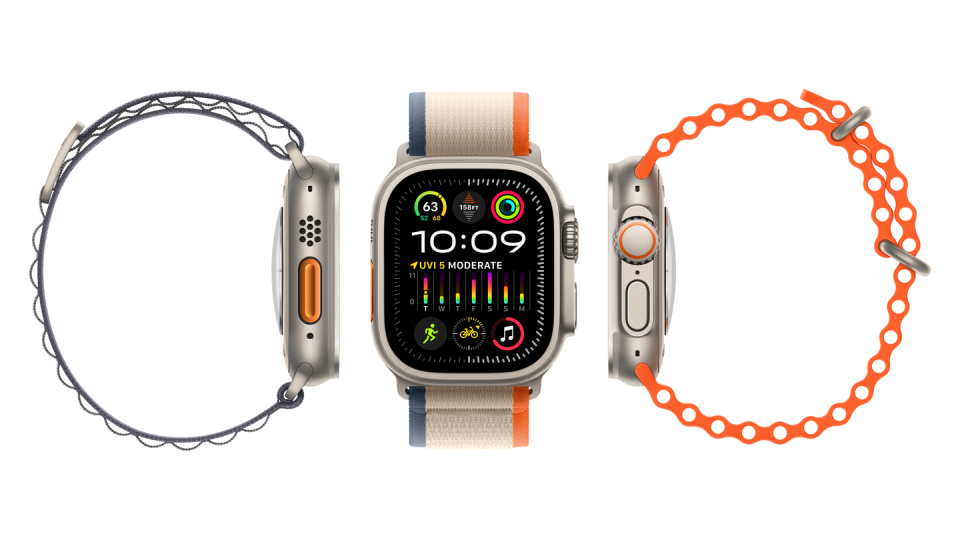Why Apple’s New Watch Announcement Is a Particularly Big Deal for Gen Z

"Hearst Magazines and Yahoo may earn commission or revenue on some items through these links."
On Tuesday morning, as they do every year, crowds thronged Cupertino, California for a moment that has come to feel as reliable a signal of the beginning of fall as the arrival of the pumpkin spice latte: Apple’s much-anticipated release of its new devices. But amidst the buzz about the iPhone 15 (titanium! a USB-C port! that 48MP camera!), Apple made news that has much broader implications. With its reveal that the Apple Watch Series 9 is its first entirely carbon-neutral product, the biggest company in the world hopes to show that serious, large-scale corporate climate action is possible—not in 20 years, but now.

“It’s a proof point of the goal we’ve set for ourselves,” Lisa Jackson, Apple’s vice president of environment, policy, and social initiatives, told me after the keynote presentation in an exclusive interview for Cosmopolitan. Jackson, who was appointed by President Obama to run the Environmental Protection Agency prior to joining Apple in 2013, took our interview outside by a campus pond in colorful Earth Day-edition Nike Air Force 1s. “We know it can be done.”
That goal? The aggressive environmental plan Apple and Jackson announced three years ago, dubbed Apple 2030: its commitment to make every one of its products carbon-neutral by that year.
Terms like “carbon-neutral” and “sustainability” are so often used that many consumers are inured to them, especially skeptical Gen Zers, 88 percent of whom say they don’t trust most brands’ eco-friendly claims. But Apple wants to set a new standard, not just for Big Tech, but Big Industry.
“Leadership matters, especially now,” Jackson says. Working in government, she often heard lobbyists say that environmental action made it impossible for companies to be competitive. But when the Paris Agreement established a global goal of reducing emissions to net-zero by 2050, she and Apple set out to prove that idea wrong. “We decided to show the world the boundaries of what’s possible,” she says. “Let’s do it quicker than everyone says you have to. Because that would be an example that policy makers, other companies, sustainability officers, activists, could point to and say, ‘If Apple can do it, then you can do it.’”
There are two ways a corporation can claim to be carbon-neutral: It can directly reduce its carbon emissions, which is what scientists and climate advocates agree we’ll really need in order to limit global warming to 1.5° Celsius and avert the worst consequences of the climate disaster; and/or it can offset them, often through nature-based solutions that recapture carbon, like planting trees.
Apple’s 2030 pledge is noteworthy for a few reasons. For one, the company is prioritizing direct emissions reduction, aiming to cut 75 percent of its overall emissions from 2015 levels before it resorts to solutions like reforestation to offset the remaining 25 percent. In addition, the company has pledged to be carbon-neutral not only across its corporate operations (which it’s already done), but also its entire supply chain, including overseas manufacturing partners like those in China. Compared to the climate pledges of 24 international corporations including Microsoft, Google, and Amazon, a 2023 report by the think tank New Climate Institute found that Apple planned to directly reduce more emissions than any other company in the group, and was one of just four companies transitioning suppliers to renewable energy.

More than half the mobile phones sold in the U.S. are iPhones, and the Apple Watch is one of the best-selling watches—analog or digital—in the world. Apple is even more dominant among Gen Z—a recent survey of over 5,000 teens found that 87 percent of them own an iPhone and 35 percent own an Apple Watch. That means the Series 9 news is a meaningful shift in the market towards ubiquitous consumer products that are produced in eco-friendlier ways. “I've always believed, always,” Jackson tells me, “that there is no choice to be made between doing right by the planet and doing right for your business.”

Here’s how Apple got there with the watch: Manufacturing for the Series 9 is now powered by renewable energy, according to the company, as a result of transitioning more than 300 suppliers—almost 90 percent of its spend—to clean energy. And the watch uses more recycled materials like gold and copper, plus 100-percent recycled cobalt in their batteries—an important move given that the mining of cobalt for lithium-ion batteries, including ones used in electric vehicles, poses serious social and environmental problems, including child labor. Apple will also no longer use leather in wristbands (or in any of its products), replacing it with a new, suede-like synthetic called FineWoven. More compact packaging eliminates plastic and gets more boxes on shipping pallets, and the company is shifting half its watch freight to ocean instead of air, because the former emits 95 percent less carbon. All of this slashes the watch’s carbon footprint by 78 percent, which Apple says represents the limit of what it can directly reduce given current solutions. The rest will be offset with clean energy projects.
Reena Skribbe, who coauthored The New Climate Institute’s report comparing corporations’ climate pledges, cautions that offsets can’t assure the neutralization of carbon because they may be impermanent—if a wildfire destroys a forest project, for example, the captured carbon goes back into the atmosphere—and their “additionality” (meaning they’d only exist because of the additional funding) is difficult to verify. Most importantly, climate experts like Skribbe say companies can use carbon offsets to continue to generate emissions or even increase them while claiming carbon-neutrality, when in fact we need to cut global emissions to achieve the Paris Agreement goal of net-zero by 2050. Direct emissions reduction, climate advocates say, should be the standard for gauging a company’s environmental practices.

Apple, too, recognizes the shortcomings of offsets, which is why the company has prioritized direct carbon emission reduction in its Apple 2030 plan—and may also be why they announced a new pledge this week that goes a step further: to reduce its emissions by 90 percent by 2050.
One thing everyone, from climate advocates to Apple execs, agrees on is the weight of Apple’s influence, and that it comes with both an enormous responsibility and genuine opportunity to create change on a massive scale. That’s what drew Jackson here in the first place: “If we could show it can be done, then those are barriers that are broken for everyone.”
As we leave the pond on Apple’s campus, Jackson tells me that she and several other Apple employees received encouraging texts from their kids after the announcement this week. (She wouldn’t tell me what her 27-year-old son texted her: “He’d kill me.”) “For that generation, this is their future,” she says. “Whether they inherit a planet that will sustain them, much less their children…whether they feel hopeful…is important. It’s of primary importance.”
You Might Also Like

